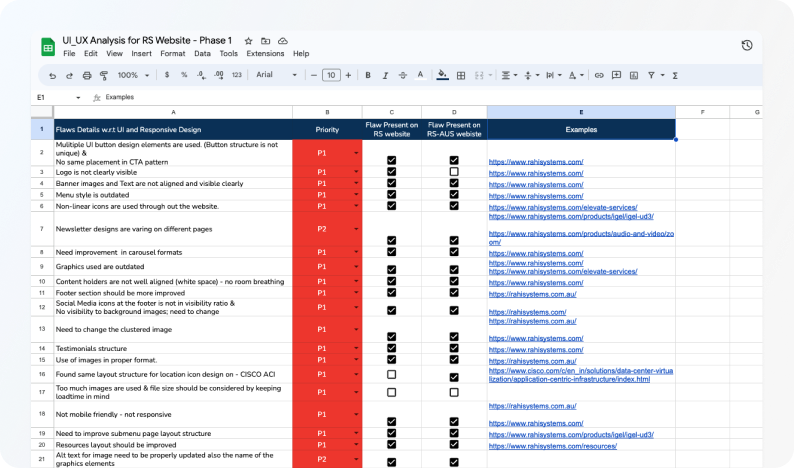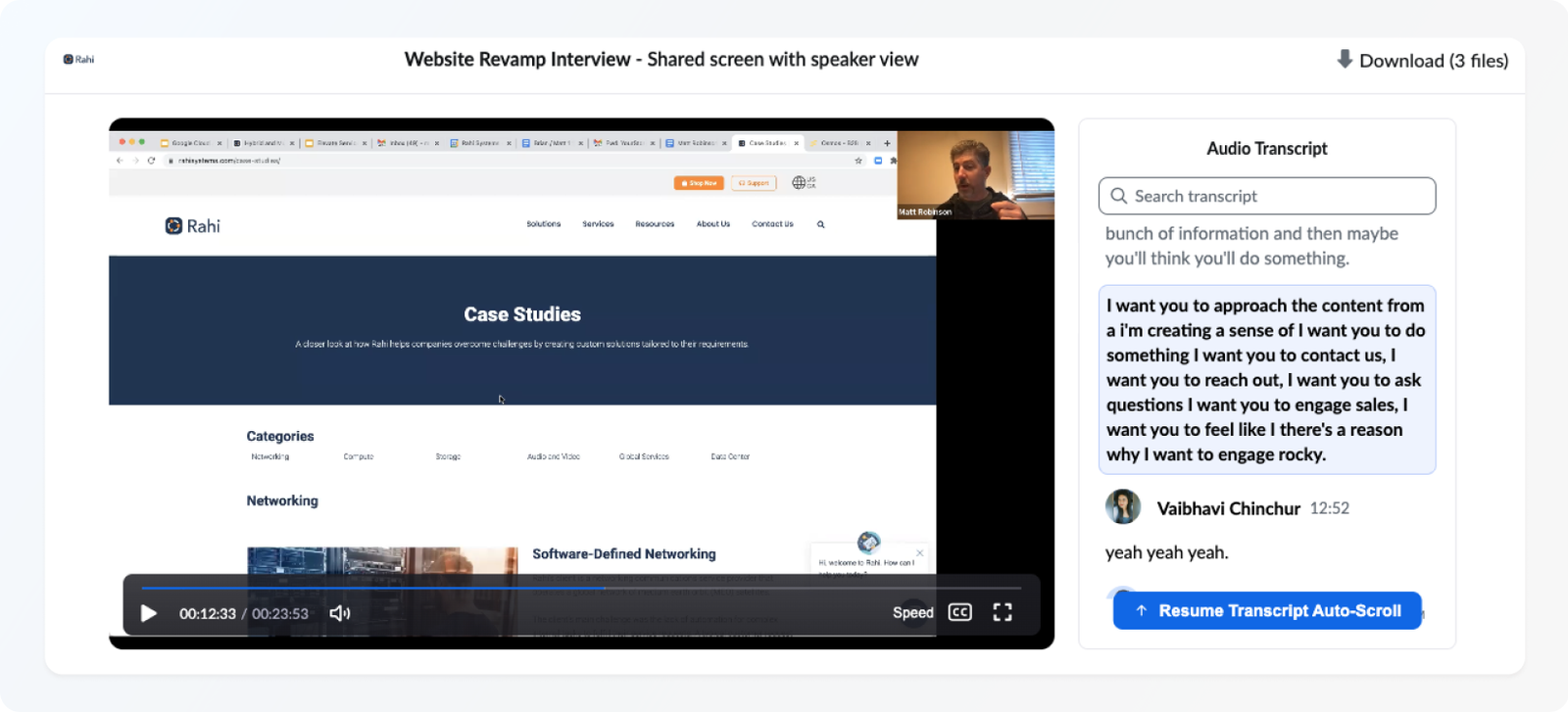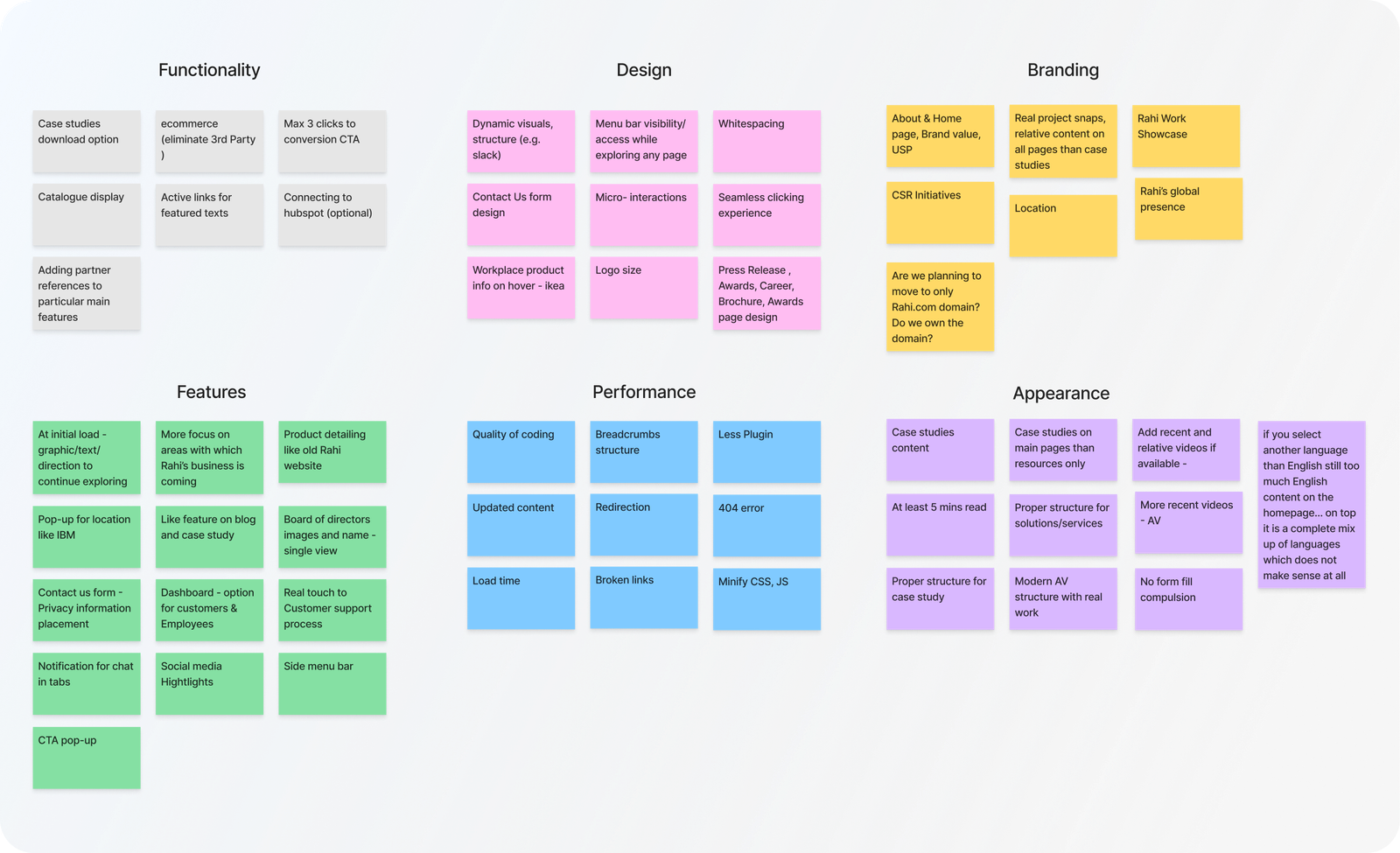📃 Case Study – Redesign of Rahi Website
The Problem
Rahi’s website faced slow load times, high bounce rates, and a cluttered user experience, making it difficult for users to navigate and engage effectively.
The Solution
To revamp Rahi’s website by improving its performance, optimizing the user experience, and reducing bounce rates ultimately driving higher engagement and business growth.
My Role
Lead Product Designer – led research synthesis to align with business goals, conducted UX research, and redesigned the website to improve usability, performance, and overall user experience.
- Product Strategy & Business Alignment
- User Research & Data Synthesis
- Business Needs & Market Analysis
- deation & Concept Development
- Design System Implementation
- UI/UX and Visual Design
- Prototyping & Usability Testing
- Cross-functional Collaboration
UX Design Process
Process We Followed
We followed design thinking process throughout the journey. Here is the visualisation of the framework for better understanding
Double Diamond Process
Stage 01
Discover
- 1. User Research
- 2. Understanding the business objectives
- 3. Evaluate technical constraints
UX/UI Audit
We conducted a comprehensive UI/UX analysis to evaluate the website’s usability, accessibility, and visual appeal. This helped identify areas for improvement with respect to cureent website interface and functionality.


Performance Analysis
We also conducted performance analysis to understand website speed and efficiency. Additionally, audience analysis, such as bounce rate evaluation, helped us understand user engagement and retention.


Competitive Analysis
We conducted competitor analysis to gain insights into the strengths and weaknesses of competitors, identify opportunities for improvements.

User Interview
We conducted user interviews to gain insights into user needs, pain points, and expectations. This helped us refine the website’s design and functionality to enhance the overall user experience.
Interview Highlights







Survey
With the help of survey we collected data and insights from the website’s target audience which can be used to improve the website’s design, content, and functionality. This can lead to a better user experience, increased engagement, and ultimately, better business outcomes.

Heuristic Evaluation
We conducted usability testing to evaluate how easily users could navigate and interact with the website. This helped identify friction points and improve the overall user experience.
Understanding the business objectives
We got clear insights into how the website should be designed to meet the company’s goals and objectives by interacting with stakeholders and product owners within the company.
We evaluated the current development process of the website to gather insights about any technological limitations or challenges that could impact the design, functionality, or user experience.
Stage 02
Define
- 1. Personas
- 2. Defining the Problems
Personas
Creating personas during the Define phase is a common practice to help teams better understand and empathize with their users or customers.




Defining the Problems

- 1. Prioritize features and improve functionality
- 2. Improve design and branding
- 3. Prioritize accessibility
- 4. Prioritize performance
- 5. Increase scanability
- 6. Expand content and restructure pages
- 7. Responsive design
- 8. Collaboration with cross-functional team
Stage 03
Ideate
- 1. Brainstorming
- 2. Card Sorting & Information Architecture
Brainstorm Sessions
We started with a brainstorm session to generate a large number of ideas and concepts related to the design problem.
Card Sorting & Information Architecture
We did the card sorting is a to understand users’ mental models and how they categorize information and based on this data created information architecture.

Stage 04
Prototype
- 1. Wireframes
- 2. Design System
- 3. High Fidelity Prototype
- 4. Micro-interaction
Wireframes
We created wireframes in the early stages of the design process which served as a guide for the flow and get clarification on functionality

Design System
We created design system which helped us create consistent and coherent user experience across different platforms and products.

High Fidelity Prototype
We created high-fidelity design of the end product to streamline collaboration, user testing to understand usability and efficiency of the product
Micro-Interaction
We used micro interactions to make a user experience more seamless, intuitive, and enjoyable to users as they interact with a product or service.
Stage 05
Testing & Iteration
- 1. Usability Testing
- 2. A/B Testing
- 3. Heuristic Evaluation
Usability Testing
We tested the product with real users to gather feedback on its usability, effectiveness, and efficiency. It helped us identify design issues, improve the user experience.
Heuristic Evaluation
We conducted usability testing to evaluate how easily users could navigate and interact with the website. This helped identify friction points and improve the overall user experience.
Heatmap Analysis
We conducted heatmap analysis to understand user behavior and design effectiveness all while reducing risk and ensuring ongoing usability and relevance.

A/B Testing
We conducted A/B testing to finalize design choices with data, help us determine which version performed better in terms of conversions, engagement, or other key metrics.
It provides quantitative data on which variation drives better results.

Stage 06
Development
- 1. Design Hand-off
Design Hand-off
In design hand-off we transferred approved designs development stage. The goal of a design hand-off is to provide all the necessary information and assets to developers to be able to effectively implement the designs.



Stage 07
Measuring Success
- 1. Improved Load Time
- 2. Reduced Bounce Rate and Enhanced User Engagement
- 3. Streamlined Process
Improved Load Time
After the revamp of the website, we analysed the load time of the website and found significant improvement with respect to performance, structure, LCP, TBT and CLS.
Before

After

Reduced Bounce Rate and Enhanced User Engagement
After the revamp of the website, we analysed the website performance which shown remarkable increase in overall user numbers by 45%, a 2.5x improvement in session rates, a substantial 78% reduction in bounce rates, and a 2x increase in average session duration.
Streamlined Process
We streamlined development process with cross-functional team collaboration which resulted in increase in productivity and delivered product with consistent design.
